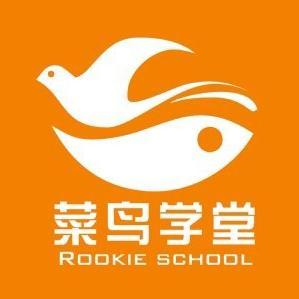What is the Internet business model?
互联网商业模式就是指以互联网为媒介,整合传统商业类型,连接各种商业渠道,具有高创新、高价值、高盈利、高风险的全新商业运作和组织构架模式,包括传统的移动互联网商业模式和新型互联网商业模式。
从发展历史来看,互联网商业模式可以分为门户网站模式、电子商务模式。
1.门户网站模式:指提供某类综合性互联网信息资源并提供有关信息服务的应用系统,例如:搜索引擎式门户网站百度、娱乐资讯式门户网站新浪、新闻信息式门户网站搜狐等。
2.电子商务模式:指在网络环境和大数据环境中基于一定技术基础的商务运作方式和盈利模式,例如:B2B代表阿里巴巴、B2C代表唯品会、C2C代表淘宝、O2O代表美团点评等。
从盈利来源来看,互联网商业模式可以分为直销模式、广告模式、价值共享交易模式。
1.直销模式:谁用产品/服务谁出钱,例如:微软、苹果。
2.广告模式:你用产品/服务广告商出钱,例如:Google、Facebook。
3.价值共享交易模式:小部分忠实付费用户养活整个产品/服务的普通用户形成交叉补贴,例如:亚马逊、腾讯、阿里。
从驱动要素来看,互联网商业模式可以分为客户驱动模式、资源驱动模式、产品驱动模式。
1.客户驱动模式:依赖于建设有力的营销体系维持客户关系的商业模式,例如:提供网站建设、项目外包开发、代理运营的公司。
2.资源驱动模式:依赖于得天独厚的资源研发产品/提供服务/承接项目的商业模式,例如:有业务资源的电信运营商、有平台资源的滴滴打车、有合作高校背景资源的科大讯飞。
3.产品驱动模式:依赖于研发产品解决用户痛点、行业(企业)问题的商业模式,例如:培训网络课程、APP开发公司。
Professional answer
The Internet business model refers to a new business operation and organizational structure model that uses the Internet as a medium, integrates traditional business types, connects various business channels, and has high innovation, high value, high profitability, and high risk, including traditional mobile Internet business models and new Internet business models.
From the perspective of development history, the Internet business model can be divided into portal website model and e-commerce model.
1. Portal website model: refers to an application system that provides a certain type of comprehensive Internet information resources and provides relevant information services, such as: search engine portal Baidu, entertainment information portal Sina, news information portal Sohu, etc.
2. E-commerce model: refers to a business operation mode and profit model based on a certain technical foundation in the network environment and big data environment, such as: B2B represents Alibaba, B2C represents Vipshop, C2C represents Taobao, O2O represents Meituan Dianping, etc.
From the perspective of profit sources, the Internet business model can be divided into direct sales model, advertising model, and value sharing transaction model.
1. Direct sales model: whoever uses the product/service pays, for example: Microsoft, Apple.
2. Advertising model: you use the product/service and the advertiser pays, for example: Google, Facebook.
3. Value-sharing transaction model: a small number of loyal paying users support the ordinary users of the entire product/service to form cross-subsidies, for example: Amazon, Tencent, Alibaba.
From the perspective of driving factors, Internet business models can be divided into customer-driven model, resource-driven model, and product-driven model.
1. Customer-driven model: a business model that relies on building a strong marketing system to maintain customer relationships, for example: companies that provide website construction, project outsourcing development, and agency operations.
2. Resource-driven model: a business model that relies on unique resources to develop products/provide services/undertake projects, for example: telecom operators with business resources, Didi Taxi with platform resources, and iFlytek with resources from cooperative universities.
3. Product-driven model: A business model that relies on developing products to solve user pain points and industry (enterprise) problems, such as training online courses and APP development companies.
The Internet business model is a powerful tool for the rapid fission of products in the Internet era. Do a good job in core products, generate data, extend other products and businesses from core products, and build ecosystems and platforms. This is the business model of Internet companies and the only way to achieve the Internet ecosystem and platform.
The logic of the Internet business model. One is to start from the C-end; the other is to start from the B-end.
Simply put, the C-end starts from the consumer market; the B-end starts from the maker and investment perspective.
Similar Q&A
recommend What is the name of Alibaba's artificial intelligence?
E-c News Continuously pushing e-commerce knowledge to you








Latest Q&A More
-
Do I need a trademark to open a franchise store on Pinduoduo to sell books?
#Pinduoduo#
-
How to withdraw from a Pinduoduo store
#Pinduoduo#
-
How to withdraw from Pinduoduo merchants
#Pinduoduo#
-
How to pay fees when closing a Pinduoduo store
#Pinduoduo#
-
How to withdraw from Pinduoduo
#Pinduoduo#
-
Which store on Pinduoduo is authentic?
#Pinduoduo#
-
Which stores on Pinduoduo can buy genuine products?
#Pinduoduo#
-
How to check the store under Pinduoduo
#Pinduoduo#
-
How to receive Pinduoduo online game products
#Pinduoduo#
-
How to sell the electronic version on Pinduoduo
#Pinduoduo#
E-c News 2025-12-01 07:02:40

- African netizens use China Africa cross-border e-commerce platform for online shopping
- how is the new seller of cross-border e-commerce doing?
- how can cross-border e-commerce Amazon sell on Amazon platform without goods?
- Amazon store opening process and cost analysis!
- Amazon plans to expand its pharmacy business on a large scale and will add same day delivery service

